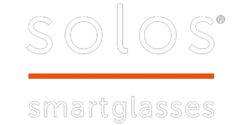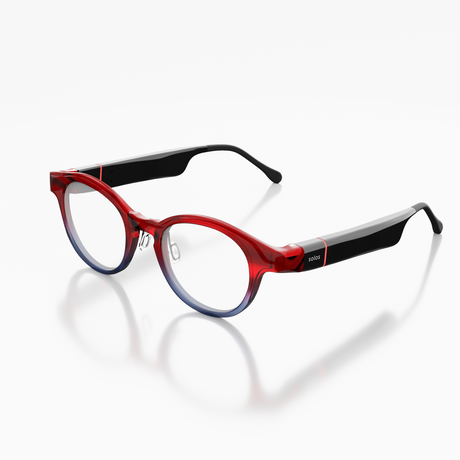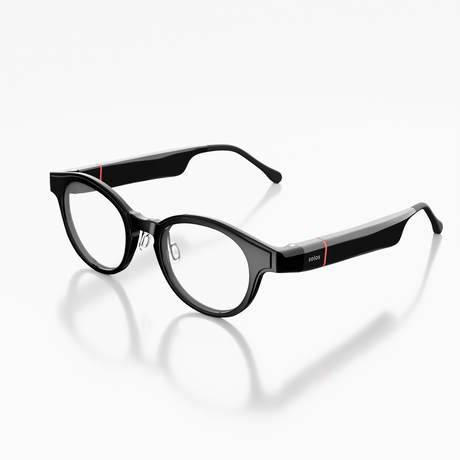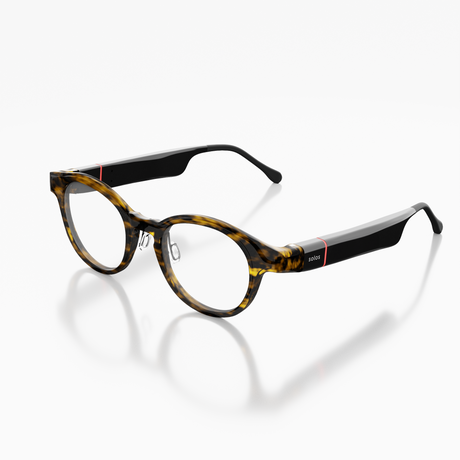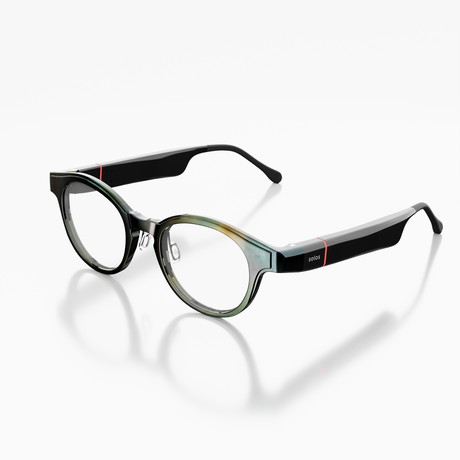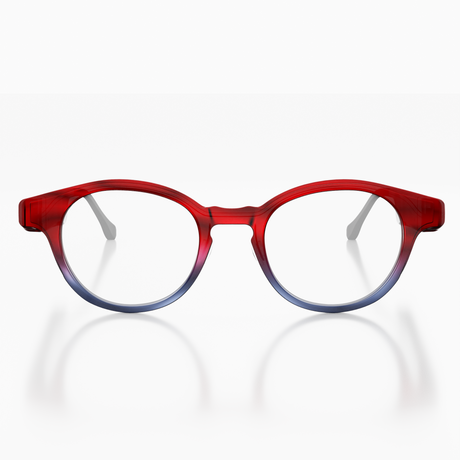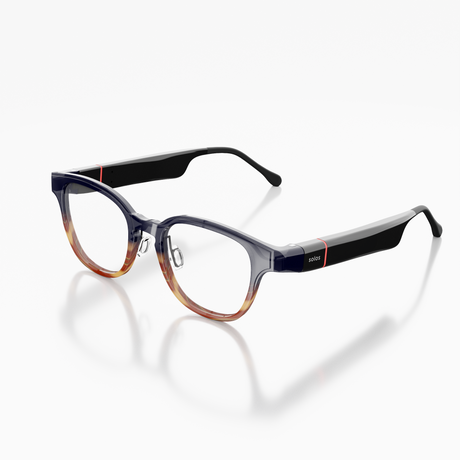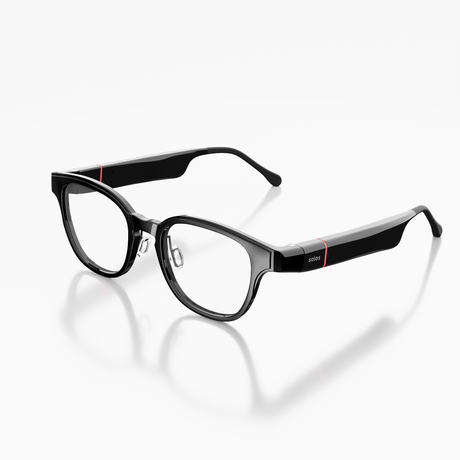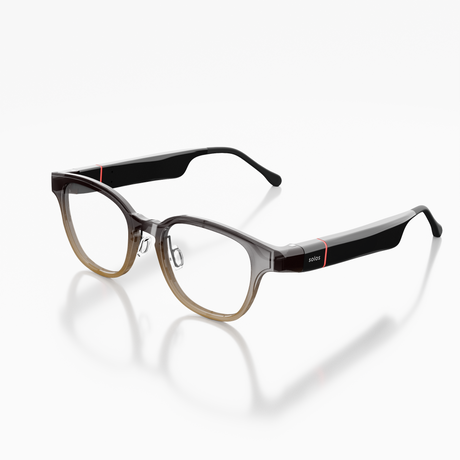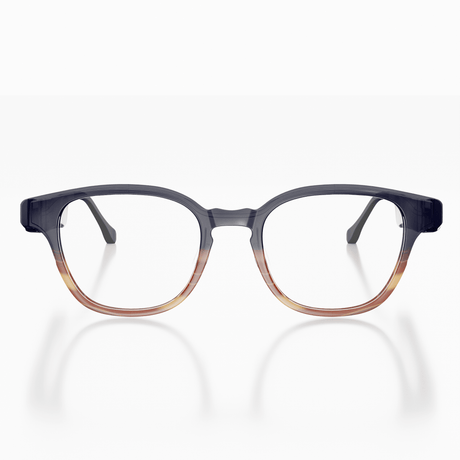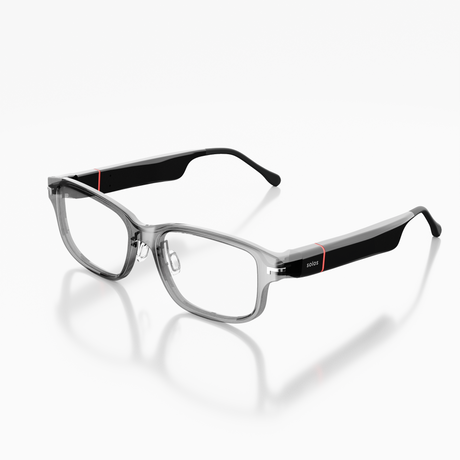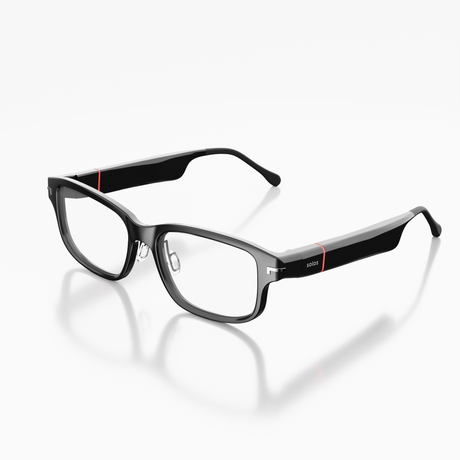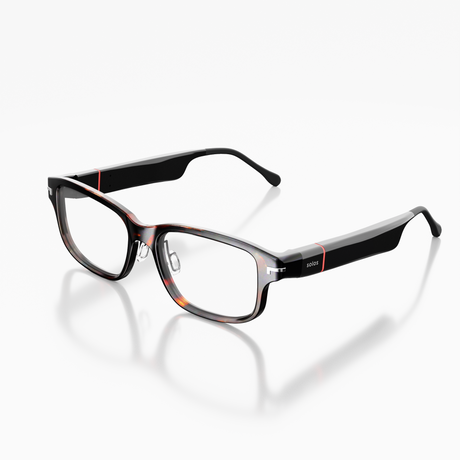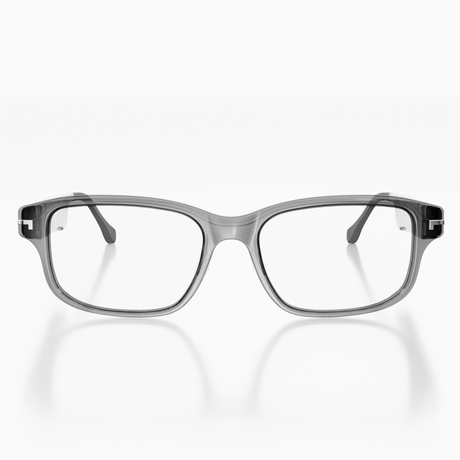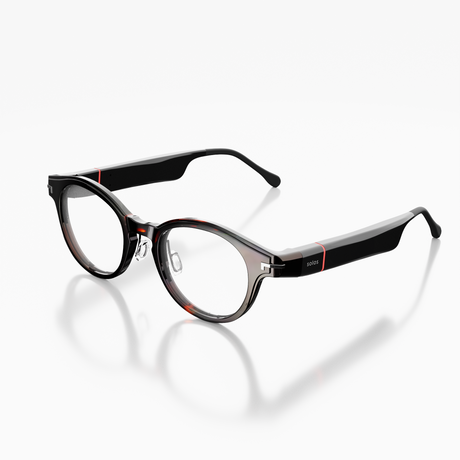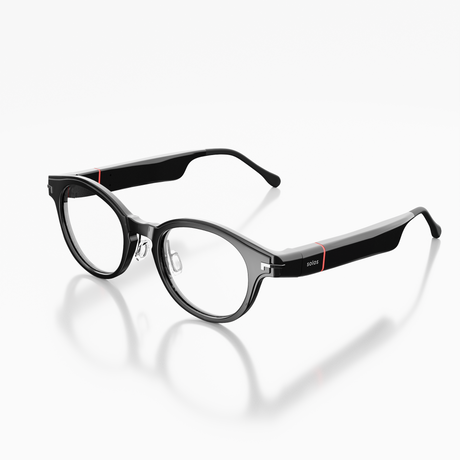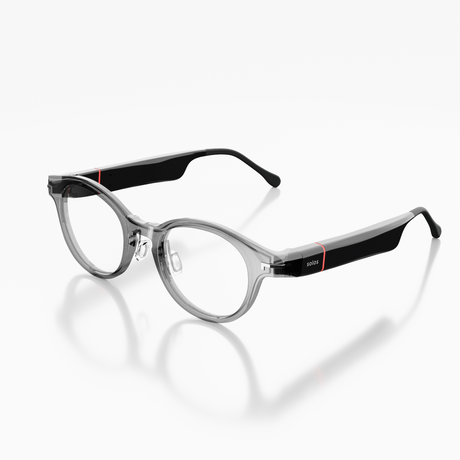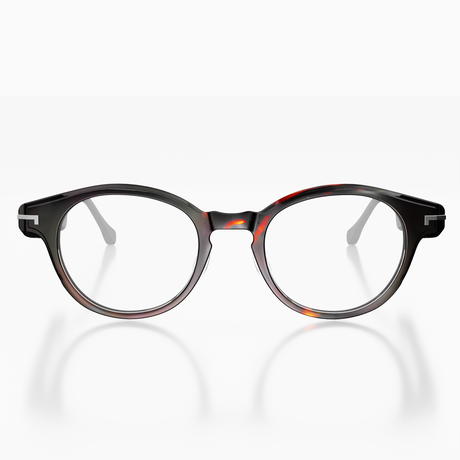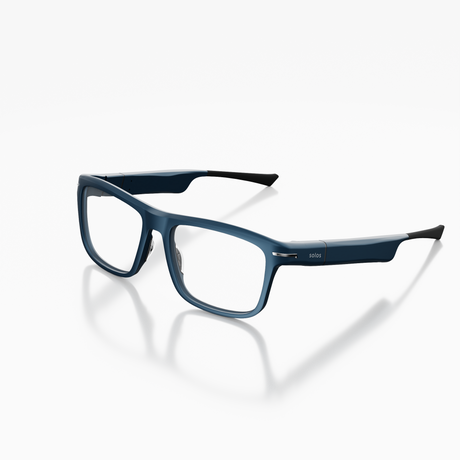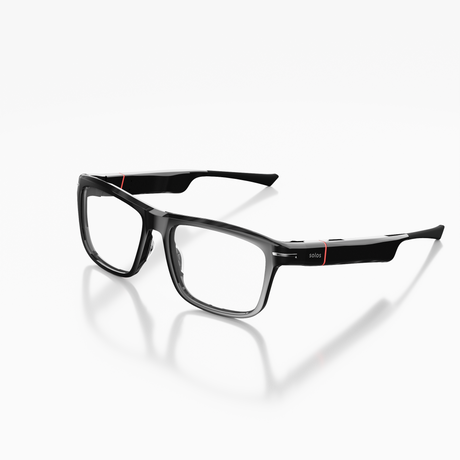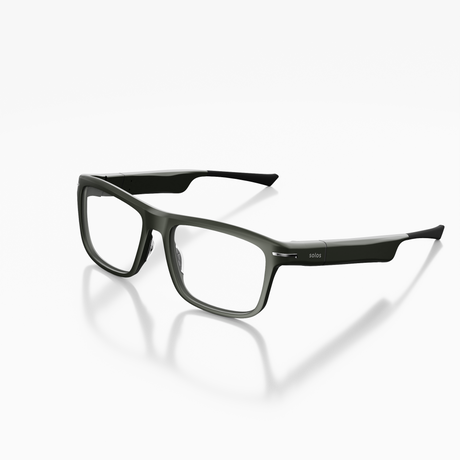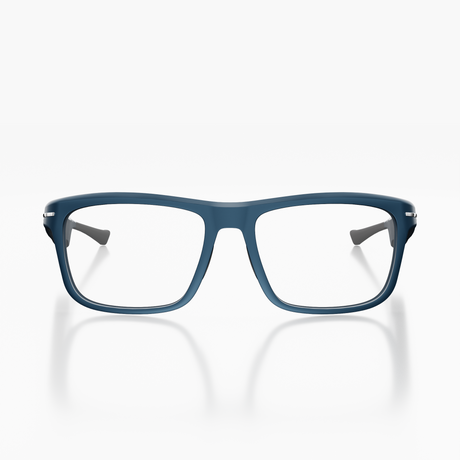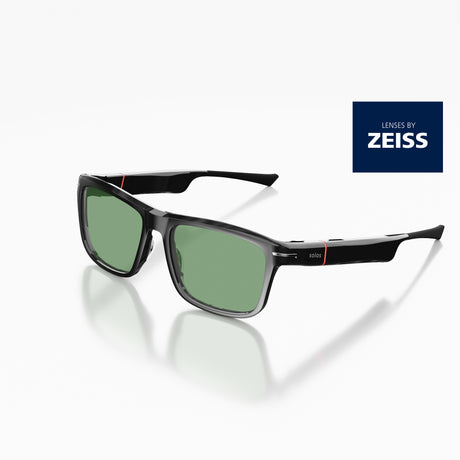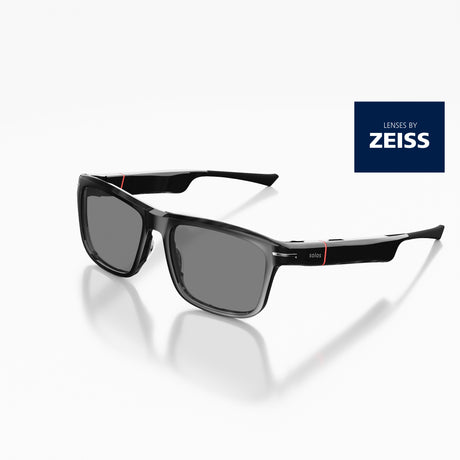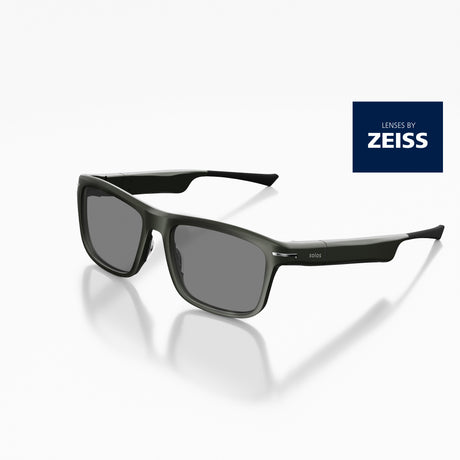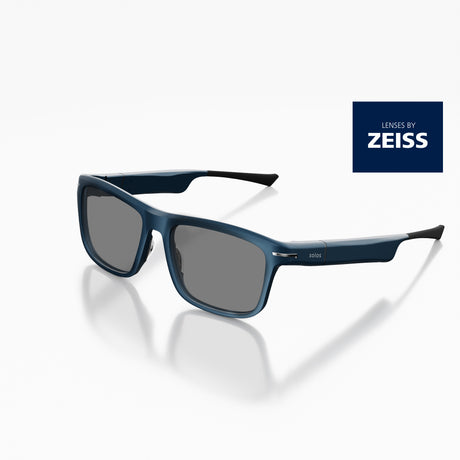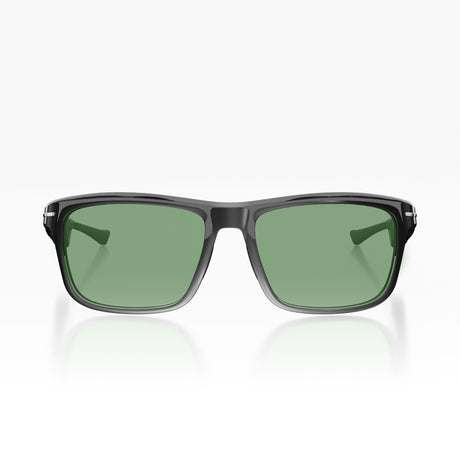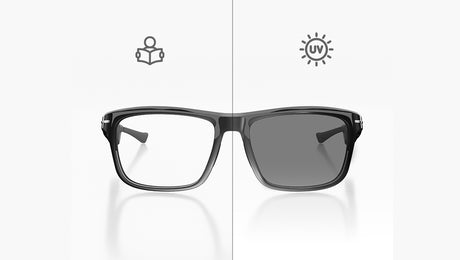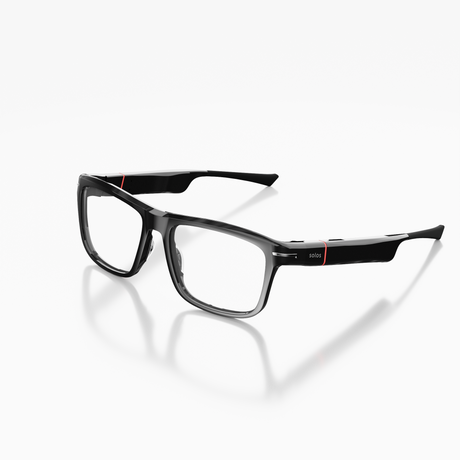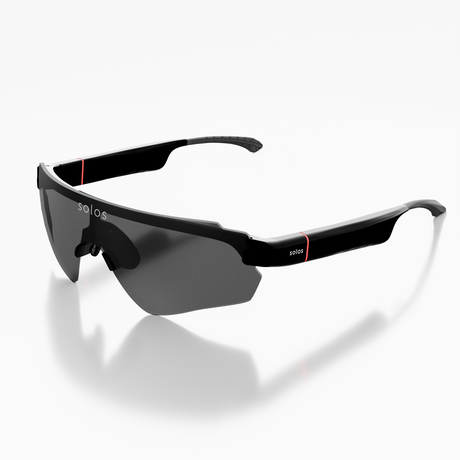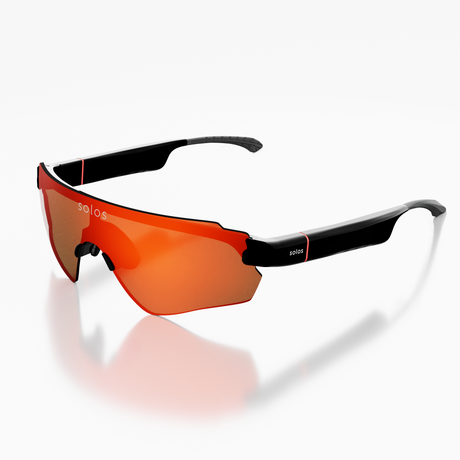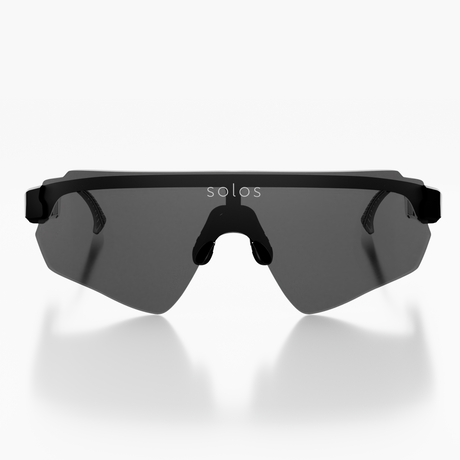Thursday, March 17, 2022 1:15 AM
Today, consumers can choose from a wide assortment of products, many of them affordably priced, with distinctive features to suit the user’s specialized needs. Gamers love virtual reality glasses that give them a thrilling, immersive experience. Fitness buffs use augmented reality smart glasses and headsets to gamify their workouts, and wear audio-enabled frames to envelope them in surround sound at the gym. Skiiers wear camera-enabled smart glasses to capture their latest ski run so they can upload the video to their favorite social media platforms.
(Select snapshots of various consumer smart glasses can be found throughout this article.)
This proliferation of products, including entries such as Amazon’s Echo Frames and Ray-Ban Stories—the result of a collaboration between EssilorLuxottica and Meta (formerly Facebook)—is helping boost consumer sales through a multitude of online and brick-and-mortar retailers and is propelling the market forward. Long-rumored releases of AR smart glasses from Google and Apple are also fueling growth expectations, though neither company has revealed its product designs or committed to a launch date.
Because the smart glasses market is so segmented, it’s difficult to completely map its growth. However, most industry sources and trend analysts expect that several market segments, driven by major consumer trends, will grow over the next several years. The Consumer Technology Association, in its annual trend forecast released in January, predicted that growing interest in the metaverse will contribute to a spike in demand for virtual reality eyewear, with shipment revenues rising from $774 million in 2021 to nearly $1.3 billion in 2022, a 66 percent increase.
Statista, citing various sources, reported that unit sales of leading AR glasses brands will rise to 3.9 million units by 2024, up from 410 thousand units in 2021. As of 2021, wellness is the primary driver for using augmented reality (AR) throughout the world, Statista observed.
Some optical retailers are eyeing this potentially lucrative market. Yet only a few have succeeded in selling a significant volume of smart glasses, and those products that are selling are largely audio- and camera-enabled models.
 |
|
“It will take the enterprise market to get solid traction on AR smart glasses before they would proliferate to consumer markets. However, the best opportunity for ECPs is to align with enterprises deploying AR smart glasses, as AR devices require more custom-tailored prescription solutions best supported by optical professionals. Major growth is still a year or two away depending on continued increase in smart glasses adoption by enterprises and ECP engagements in these budding opportunities,” Ho said.
Jerome A. Legerton, OD, FAAO, co-founder, director, chief clinical and regulatory officer of Innovega Inc., cites several factors that are impacting the growth of the smart glasses market, both now and in the near future.
“Applications that involve the metaverse, rich media and information access will be the drivers. The limiting factors relate to the form factor of the glasses. The industry continues to be limited by the need for further miniaturization that brings reduction in bulk and weight,” said Dr. Legerton. His company will soon release eMacula, a glasses and contact lens combination that gives the user “a discreet, high performance entertainment and information experience,” according to its website.
 |
|
Yet Dr. Legerton believes the situation will improve, and that optical retailers and eyecare professionals will play a major role in dispensing smart glasses and smart contact lenses.
“The transformation in our industry toward aggregate buying and providing of care makes for a more rapid adoption of the dispensing of smart glasses; and contact lens providers already have a healthy interest in specialty contact lenses. I teach and preach ‘Personalized Ultimate Reality’ and believe that one-size fits all smart glasses are limited in their potential to be comfortable and accepted by the majority of consumers. Smart glasses and smart contact lenses need personalization by ECPs by way of assessment, measurement and fitting.”
Some industry observers limit their definition of the smart glasses market to AR and VR products. “In general, audio/video/Bluetooth connection eyeglasses are not technically considered ‘smart” glasses’ because they are simply routing audio and video signals without significant computer processing that would produce desired results such as augmented/virtual/mix reality environment,” said Rochester Optical’s Ho.
However, consumers typically overlook those distinctions when shopping for smart glasses, and many manufacturers embrace the term for the technological sophistication it infers. (For the purposes of this article, audio-enabled glasses will be considered smart glasses.)
A major supplier that positions its glasses as an audio wearable device is Amazon. The online giant sells its Echo Frames direct to consumers, naturally, but has arranged for customers to get their frames Rx’d at select brick-and-mortar stores and through an online replacement lens service.
“We’re very encouraged by the customer response we’ve seen,” said Amazon’s Jean Wang, director, Echo Frames. “Echo Frames are rated above four stars on Amazon.com, and we continue to hear inspiring feedback about ways customers are using Frames to make the most of their day-to-day,” Wang told VM.
 |
|
“One customer even shared how invaluable Echo Frames are with their disability, explaining that ‘holding a phone up to my head is not optional for long periods of time, but now I can talk to family and friends effortlessly.’”
Wang said Amazon has worked with eyewear designers to create a product that appeals to eyeglass wearers and is easy for eyecare professionals to dispense.
“When we created Echo Frames, it was important for us to consider design concepts and industry trends,” she explained. “At the same time, we are also inspired by our customers. Early in the development of Echo Frames, we took on the mantra ‘eyewear first, then technology.’ We recognized the importance of delivering the type of eyewear that our customers want, taking into consideration comfort, fit, the ability to accommodate an Rx and, of course, style.
“And we wanted to make it just as easy for eyewear professionals to add prescription lenses like any other glasses. Over the years, we’ve conducted extensive research, consulted with eyewear and design experts, and collected feedback from our customers. All these insights helped us iterate on the Echo Frames design and deliver the style options we offer today.”
 |
|
“We have dedicated teams at both companies who worked together to bring Ray-Ban Stories to market, and continue to support it,” said Ankit Brahmbhatt, product manager, Meta. “The teams leveraged the best of both companies from consumer hardware, engineering, design and manufacturing.
“Luxottica is the biggest name in eyewear; their industry-leading expertise in fashion, style and eyewear paired with Meta’s strength in community, connection and consumer hardware/software made this partnership a no-brainer. The result being the first pair of smart glasses that blend form and function,” Brahmbhatt said.
 |
|
“It’s exciting to see that the product is really resonating with people,” Basilico said. “For the first time, consumers can own a pair of smart glasses that they actually love wearing every day. We see hundreds of videos shared to Instagram of quick moments and everyday adventures someone might have otherwise missed. The feedback we’re getting is very encouraging.”
Basilico noted that a key feature of Ray-Ban Stories and a major factor in their “adoptability” is that consumers can pick the glasses that are right for them. “This is a full collection of frames and lenses vs a one-style-fits-all approach,” said Basilico.
“Our frame styles include Wayfarer, Round and Meteor in four different colors, and our lens options include sun, plano, polarized, gradient, Transitions and prescription. For example, a consumer can get a pair of Ray-Ban Stories in a round dark blue frame with their own prescription. Ray-Ban has made personalization a priority for years, going back to the launch of Ray-Ban Remix, so this sense of individuality was in our DNA from the start.”
A recent Ray-Ban Stories update allows wearers to send and read Messenger texts, and EssilorLuxottica plans other enhancements. “One of the main draws for Ray-Ban Stories is the appeal of hands-free convenience,” said Basilico. “We’ll build to expand on the messaging functionality. Look for new ways to put your voice to use for more seamless integrations with your phone and to improve the ‘listening experience.’ We’ll also make updates to the app, giving people new ways to customize and curate their photos and videos.”
The Rx Factor
Rx-ability—being able to fit a frame with prescription lenses—is essential for many smart glass wearers. It’s also the reason that a growing number of consumer smart glasses brands, optical retailers, ECPs and optical labs are intersecting. Ray-Ban Stories owners can take their glasses to both LensCrafters and Sunglass Hut stores for Rx-ing, even if they purchased them through Amazon or at non-optical retailers like Best Buy, Macy’s, Neiman Marcus, Nordstrom or Target Optical.
Independent eyecare professionals are also an important part of EssilorLuxottica’s Ray-Ban Stories distribution network.
“We are focusing on quickly expanding distribution in our optical channels with a specific focus on independents,” an EssilorLuxottica spokesperson told VM. “We are thinking of Stories as a part of the overall Ray-Ban eyewear collection and envision building a wide distribution for it.
“Since the product was designed to have a prescription mounted, the role of the optical channel is complementary to the sun plano ones and very important to drive adoption with consumers,” the spokesperson said. “Within this strategy we are offering our ECP network the possibility to mount Ray-Ban Authentic Prescription Lenses on all Ray-Ban Stories models through our complete pair lab services.”
Amazon also offers a prescription lens option for Echo Frames that customers can utilize through LensCrafters. “We’ve designed Echo Frames so that eyewear professionals can readily add prescription lenses, just like for normal glasses,” said Amazon’s Jean Wang.
Wang said, “Opticians can simply follow the steps in our installation guide. Customers can also get prescription lenses for their Echo Frames at any LensCrafters or online at boomerang-lenses.com. Many vision insurance providers offer out-of-network reimbursement for Echo Frames, including VSP, EyeMed, and Cigna.
“Customers can learn more about these offers by contacting their insurance provider. As always, we continue to look for opportunities to improve the experience for both eyewear professionals and our customers, and welcome their feedback,” Wang concluded.
 |
|
“If you consider that smart glasses are going to be the next computing platform and a large percentage of the population will be using them, all of the users that need scripts will be the size of the market,” he pointed out.
Vuzix offers prescription lenses for its smart glasses through a professional service. However, the company recently entered into a distribution agreement with European optical chain Fielmann to supply Rx lenses for its enterprise level AR smart glasses, but not for its consumer products.
“We currently offer prescriptions for both our Blade and Shield smart glasses and we use a professional service to support the scripts,” explained Travers. “This is also the idea behind the Fielmann relationship in enterprise. They are available to provide scripts for the companies that need them for their employees.”
Travers said Vuzix, which also sells its consumer models through Amazon and other outlets, currently has no plans to expand distribution to include independent eyecare professionals in brick-and-mortar locations.
Ho noted that Rochester Optical’s business model has gradually migrated from designing and producing prescription inserts for AR and VM glasses to designing prescription solutions that are an integral part of smart glasses development under NDAs with OEMs. “This is an improvement as smart glasses OEMs come to realize that it is much better to incorporate Rx solutions at the device design phase than coming to us to retrofit prescription solutions as an afterthought,” he said.
Innovega’s Dr. Legerton predicted that there will be a category of smart glasses that need customized lenses or prescription lenses added. “Other smart glasses will be glazed at the time of manufacturing, or the lenses may contain the technology for the display,” he said.
“For example, waveguide optics are inside the lens and have electronic complexity that is not expected to convert to a lab product. Other smart glasses will require a prescription lens. The contact lens industry in general will benefit from smart glasses being another reason to wear contact lenses. I forecast contact lens market growth as smart glasses become more lightweight, stylish and comfortable,” Dr. Legerton said.
Independents See an Opportunity
Although independent optical retailers and eyecare professionals account for a small proportion of smart glasses sales, some are skilled at selling them, particularly audio smart glasses. One such product that is catching on with independents is Lucyd. The brand is marketed and distributed by Lucyd Ltd., a portfolio company of U.K.-based Tekcapital. In December, 2021, VMAIL reported that Innovative Eyewear, a Miami, Fla.-based subsidiary of Lucyd Ltd., filed a registration statement with the U.S. Securities and Exchange Commission (SEC), for a proposed IPO.
Lucyd’s newest product line is Lucyd Lyte, which it touts as the first “optical-quality smart frame.”
“Lucyd offers a whole new category of smart eyewear, that is a groundbreaking combination of lightweight optical frames and a wireless Bluetooth headset,” said Innovative Eyewear CEO Harrison Gross. “Lucyd smart frames allow you to listen to music, take phone calls hands-free, and access voice assistants like Siri and Alexa,” said Gross, adding that Lucyd frames use high-quality optical materials in the frontplate, “so they can be edged like any normal glasses.”
Sixteen premium lens tints are available in non-Rx, single vision, progressive bifocal and readers. He added that Lucyd frames cost the same as regular designer eyewear, “making it an easy and affordable second sale for opticians.”
Gross said he views optical stores as Lucyd’s core customers, and wants to develop mutually-beneficial relationships with ECPs in the U.S. and Canada. “We listen closely to optician and end-user feedback, and develop solutions and products in response to market demand. For example, Lucyd is introducing a brick-and-mortar exclusive line for their opticians, to support them with a unique product line that can’t be found anywhere else.”
To help with in-store merchandising, the company has developed a custom virtual try-on kiosk which acts as an automated salesperson by educating customers about the product category and allowing them to try it on hands-free. “Lucyd’s main goal for 2022 is to get their smart frames in optical stores in every state of the U.S., to provide as many customers as possible with the opportunity to upgrade their eyewear,” Gross said.
Frank Rescigna, an eyeglass industry veteran who has managed sales for companies such as Marcolin, Viva and Charmant, is leading the company’s push into optical.
Lucyd recently introduced an audio app called Vyrb which offers wearers new social features such as creating and listening to high quality audio content. The main launch of the app is coming in mid-second quarter 2022, with the addition of other features such as hosting live audio chatrooms directly from Lucyd glasses, according to Gross.
Some optical retailers report that Lucyd is catching on with customers. “I’m selling a lot of Lucyd,” said John Bonizio, CEO of Metro Optics, a four-store group in Bronx, N.Y. that is a pioneer in selling smart glasses. “Why? Because it’s ophthalmic. It’s basically an [Apple] Air Pod. I have worn these glasses playing golf. The battery life is exceptionally good for a smartphone. I can listen to music while I’m playing golf. If I get a phone call, I can answer it. And the range is pretty good.
“People come into our stores to get eyeglasses, not smart glasses,” said Bonizio. “But when they come in, they see it and ask, ‘What’s this? Oh, it can answer your phone, you can listen to music.’ It covers two things that a smart watch should.”
Peter Grimes, founder and CEO of Eye.quity, a seven-store optical chain based in Indianapolis, Ind., said Lucyd is attracting customers’ attention and is selling well. “I was impressed with the packaging,” said Grimes. “It’s eye catching, which makes it easy to create a compelling display. If you display it properly, it creates a great avenue for conversations with customers.”
Another audio-enabled smart glass brand that’s targeting optical retail is Solos. Majority owner Kopin Corp., a leading provider of components for wearable computing systems for military, industrial and consumer products, is using it as a springboard for entering the optical market.
Drew Oppermann, a veteran optical industry executive who is managing the Solos optical business, singled out its high-performance features and ergonomic styling. “We have over 50 patents, over half of them around our exclusive Whisper technology,” said Oppermann. “We call it ‘noise exclusion,’ and it’s better than noise cancellation. There are two mics strategically placed in glasses. They form a kind of cone around your mouth that only picks up your voice.” The glasses, which can be worn indoors or outdoors, are compatible with Siri and Google Assistant.
Solos won two CES Innovation Awards this year, one for Whisper and the other for Smart Hinge, a detachable hinge that lets users easily customize their glasses by switching the front or temples. “It’s very modular, for easy servicing,” Oppermann pointed out.
Yet another notable entry into the audio smart glasses category is VSP Global, which collaborated with audio specialist Bose to produce Bose Open Ear Audio Sunglasses. The product marks a return to the smart glasses arena for the vision care company, which previously offered Level, a smart eyeglass that provided biometric data to the wearer when connected with a proprietary app.
“While we made the decision to sunset Level smart glasses in 2020, there were invaluable learnings from the product that continue to shape our work in smart eyewear today,” said Ruth Yomtoubian, senior director of the VSP Global Innovation Center. “For one, we identified that prescription lens fulfillment is a high-friction point for smart eyewear because it can often be a confusing, multi-step process for consumers. That has to be simplified.
“Another thing we learned was the importance of partnerships in the innovation ecosystem. Going solo has its time and place, but we’ve found that you can often achieve more through partnership with experts in other fields who complement our capabilities and 65-plus years of experience in the optical industry. One example of this is our ongoing work with Bose on the Bose Open Ear Audio Sunglasses, now available on Eyeconic.com,” Yomtoubian said.
Retailers Take a Second Look
Will 2022 be the year that smart glasses are embraced more widely by optical retailers? It’s too early to tell. So far, no national chains have committed to the challenge. But some are watching carefully from the sidelines and may enter the market if they can offer customers a better shopping experience and better value than online retailers, electronics stores or general merchandise retailers currently do.
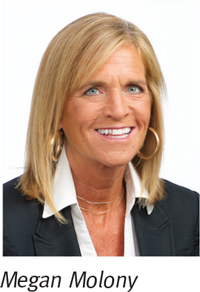 |
|
Molony believes consumers’ growing interest in the metaverse is raising awareness of how smart glasses can play a role in “augmenting” one’s life. “It’s too early to say how big the opportunities will be in the optical space. But we will start doing a lot more work to explore which solution is right for us,” she concluded.
